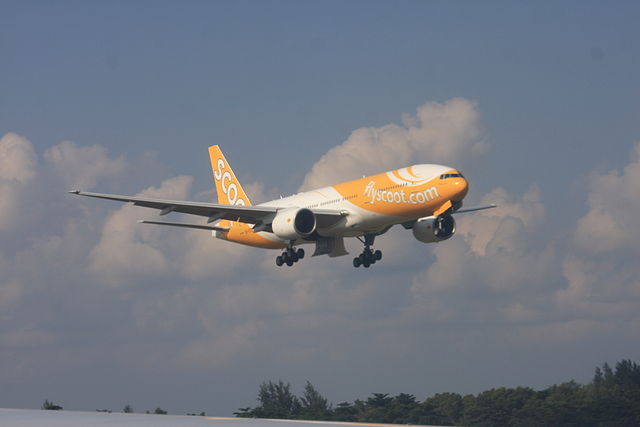 LCC Scoot Air Boeing 777-212 ER (Wikimedia)
LCC Scoot Air Boeing 777-212 ER (Wikimedia)
by David Parmer / Tokyo
The Asian airline industry’s big story for 2014 will surely be the continued expansion of the Low Cost Carrier (LCC) segment of its business. CAPA Center for Aviation estimates the LCC fleet to be 1,000 aircraft at present with a staggering 1500 orders in place. Airbus and Boeing are bullish on the market estimating the need for 7,000 wide body aircraft and 20,000 narrow body aircraft in the next 20 years. Now there are 47 LCCs in the region, with another 10 expected to be launched in 2014. Orders for new aircraft are huge. Aviation Week reports that Lion Air has outstanding orders for 500 Airbus 320s and Boeing 737-800s. Air Asia has orders for 337 aircraft and Viet Jet has orders for 90 A320s. In general, LCCs buy the same type of plane to keep costs down. And fleets tend to be younger due to the presence of newer aircraft.
The expansion of LCC in the region is impressive. Airbus estimates that LCCs sell 25% of total seats across Southeast Asia. CNNs estimate is close to double that. LCCs share of seats in North Asia is estimated to be just 9%. Japan Airlines reportedly has no plans to acquire a stake in an LCC until there is what it sees as an inevitable shakeout in the market. Rumors of an open skies policy within ASEAN to be discussed in 2015 fuel visions of a one billion plus future passenger market.
But events on the ground point to the old truism that not ALL clouds have silver linings. Already there seems to be an adjustment in the volatile LCC market. And the dreaded “O” word is being spoken: oversupply. Reports are surfacing of aircraft orders being deferred and consolidation of carriers taking place. In the short term this may be the case, but as for the future, it looks like the shape of the airline industry will be dominated by the LCCs. Cheap and fast will most likely be the wave of the future for this part of the world.
 日本語
日本語 English
English 中国語
中国語